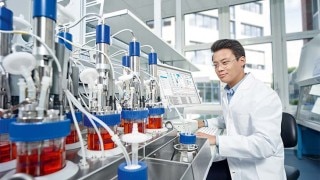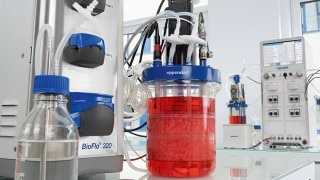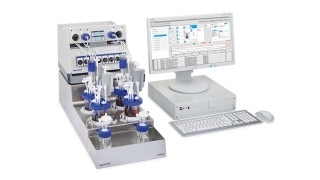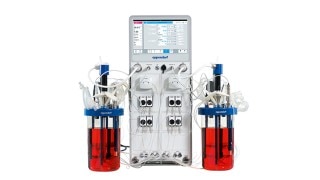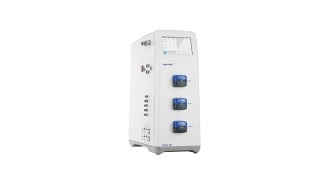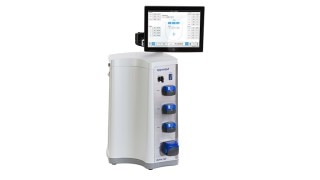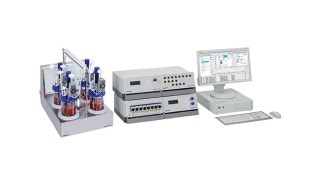メニュー
JP | JPY
-
-
-
- Challenges and Chances: A Review of the 1st Stem Cell Community Day
- Summertime, and the Livin’ Is Easy…
- Follow-on-Biologics – More than Simple Generics
- Bacteria Versus Body Cells: A 1:1 Tie
- Behind the Crime Scene: How Biological Traces Can Help to Convict Offenders
- Every 3 Seconds Someone in the World Is Affected by Alzheimer's
- HIV – It’s Still Not Under Control…
- How Many Will Be Convicted This Time?
- Malaria – the Battle is Not Lost
- Physicians on Standby: The Annual Flu Season Can Be Serious
- At the Forefront in Fighting Cancer
- Molecular Motors: Think Small and yet Smaller Again…
- Liquid Biopsy: Novel Methods May Ease Cancer Detection and Therapy
- They Are Invisible, Sneaky and Disgusting – But Today It’s Their Special Day!
- How Many Cells Are in Your Body? Probably More Than You Think!
- What You Need to Know about Antibiotic Resistance – Findings, Facts and Good Intentions
- Why Do Old Men Have Big Ears?
- The Condemned Live Longer: A Potential Paradigm Shift in Genetics
- From Research to Commerce
- Chronobiology – How the Cold Seasons Influence Our Biorhythms
- Taskforce Microbots: Targeted Treatment from Inside the Body
- Eyes on Cancer Therapy
-
-
-
-
-
- Challenges and Chances: A Review of the 1st Stem Cell Community Day
- Summertime, and the Livin’ Is Easy…
- Follow-on-Biologics – More than Simple Generics
- Bacteria Versus Body Cells: A 1:1 Tie
- Behind the Crime Scene: How Biological Traces Can Help to Convict Offenders
- Every 3 Seconds Someone in the World Is Affected by Alzheimer's
- HIV – It’s Still Not Under Control…
- How Many Will Be Convicted This Time?
- Malaria – the Battle is Not Lost
- Physicians on Standby: The Annual Flu Season Can Be Serious
- At the Forefront in Fighting Cancer
- Molecular Motors: Think Small and yet Smaller Again…
- Liquid Biopsy: Novel Methods May Ease Cancer Detection and Therapy
- They Are Invisible, Sneaky and Disgusting – But Today It’s Their Special Day!
- How Many Cells Are in Your Body? Probably More Than You Think!
- What You Need to Know about Antibiotic Resistance – Findings, Facts and Good Intentions
- Why Do Old Men Have Big Ears?
- The Condemned Live Longer: A Potential Paradigm Shift in Genetics
- From Research to Commerce
- Chronobiology – How the Cold Seasons Influence Our Biorhythms
- Taskforce Microbots: Targeted Treatment from Inside the Body
- Eyes on Cancer Therapy
-
-
JP | JPY
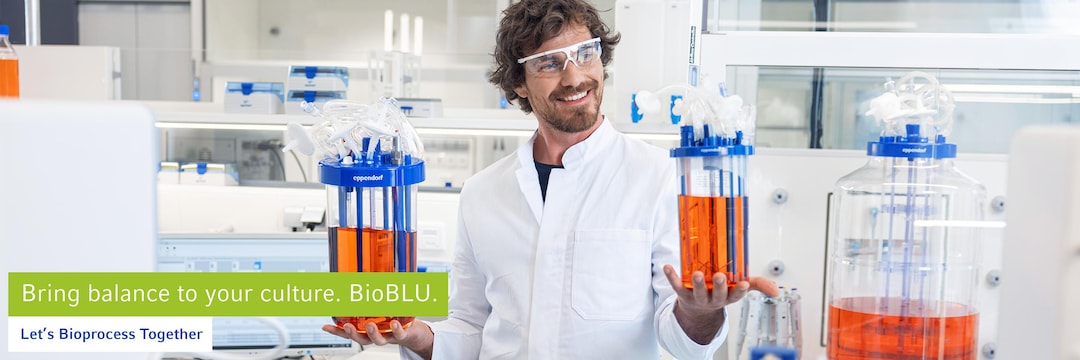
使い捨てバイオリアクター
製品
使い捨てバイオリアクターについて
5 製品群
Single-use bioreactors from Eppendorf combine the trusted performance of stirred-tank design with the advantages of one-time use.
BioBLU Single-Use Bioreactors are rigid-walled stirred-tank bioreactors, which can serve as a viable replacement for traditional glass bioreactors. BioBLU Single-Use Bioreactors are available in different sizes for scalable bioprocesses with working volumes from 65 mL to 40 L. BioBLU c Single- Use Bioreactors are optimized for the cultivation of animal cells whereas BioBLU f Single-Use Bioreactors are designed for microbial fermentation.
Eppendorf offers reusable glass bioreactors for cell culture and microbial applications as well.
Eppendorf offers reusable glass bioreactors for cell culture and microbial applications as well.
もっと読む
表示を減らす
What is a single-use bioreactor?
Single-use bioreactors are bioreactors made of plastic and are disposed after one-time use. They are an alternative to reusable bioreactors made of glass or stainless-steel, which need to be cleaned and sterilized after a bioprocess run. The terms single-use bioreactor and disposable bioreactor are used synonymously. Single-use bioreactors are particularly relevant in the biopharmaceutical industry.
もっと読む
表示を減らす
What are the advantages of single-use bioreactors?
The main advantage of disposable bioreactors is that they do not require cleaning. This saves time and allows higher turn-around and eliminates the risk of cross-contamination between runs due to improper cleaning.
もっと読む
表示を減らす
What are the differences between single-use and reusable bioreactors?
The most obvious difference between single-use bioreactors and reusable bioreactors is that single-use bioreactors are disposed after one-time use whereas reusable bioreactors are used multiple times and need to be disassembled, cleaned, re-assembled, and autoclaved after each run. Consequently, the preparation time when using disposable bioreactors is much shorter than when using reusable bioreactors and the risk of cross-contamination is reduced. Single-use bioreactors are made of plastic; reusable bioreactors are made of more durable material such as glass or stainless-steel.
もっと読む
表示を減らす
BioBLU® Single-Use Bioreactors are build on decades of experience in the field of polymer products
Decades of experience in the field of sophisticated polymer products were key to the development of BioBLU Single-Use Bioreactors.
- Bioreactor body and head plate comprised of single layer injection-molded plastic not containing softeners.
- The use of virgin raw materials eliminates risks from the use of recycled materials.
- Eppendorf sources all raw material directly.
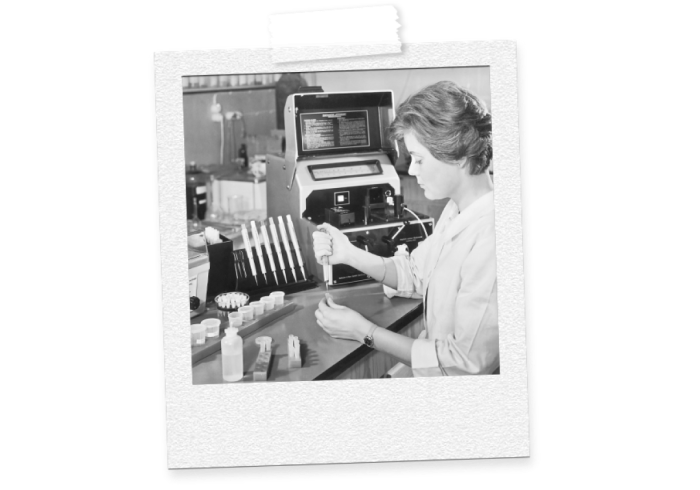
BioBLU® Single-Use Bioreactors for various applications
Widely compatible with Eppendorf bioprocess controllers
The BioBLU Single-Use Bioreactors are compatible with small- and bench-scale bioreactor control systems from Eppendorf. These bioreactor controllers are also compatible with glass bioreactors. BioBLU Single-Use Bioreactor Adaptor Kits facilitate the conversion of your bioreactor system from single-use to reusable bioreactors and vice versa. Like this, a one-time investment in a control station gives you continuous choice between disposable and reusable bioreactors. BioBLU Single-Use Bioreactors can be connected to selected third-party bioprocess control systems as well. Please contact your Eppendorf sales representative for more information.
もっと読む
表示を減らす







